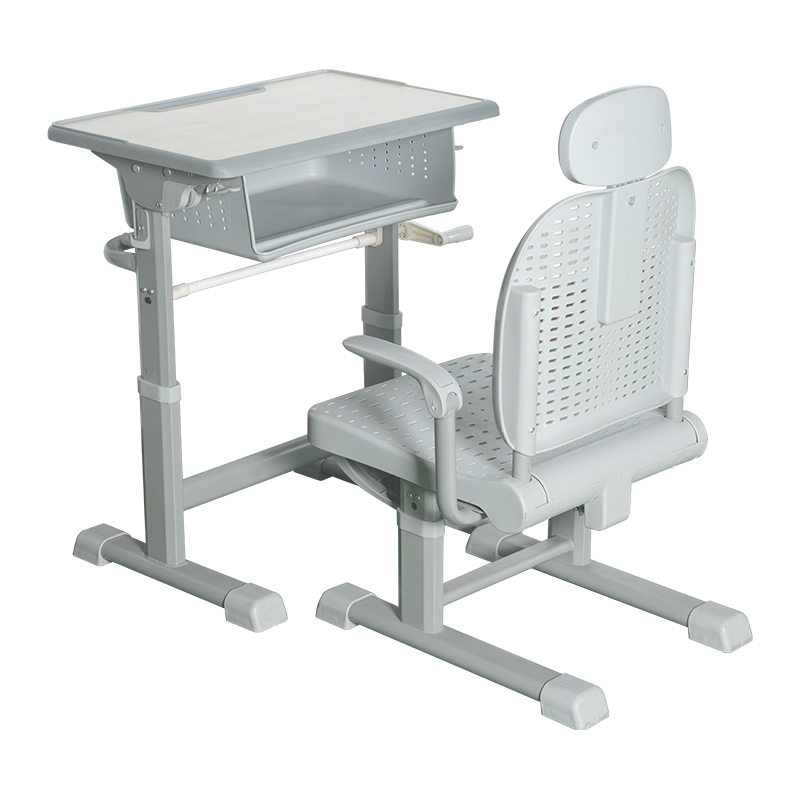The structural design of adjustable student classroom tables and chairs plays a crucial role in the overall learning environment. With a focus on ergonomics, durability, and flexibility, the design of these furniture pieces has evolved significantly in recent years. Adjustable student classroom tables and chairs are no longer simply functional; they have become an integral part of creating an effective, comfortable, and productive classroom.

One of the significant considerations in the design of adjustable student classroom tables and chairs is ergonomics. Students spend long hours seated during lessons, so their desks and chairs must promote healthy posture and prevent discomfort. An ergonomic design ensures that adjustable student classroom tables and chairs are suited to a wide range of body types and sizes, offering customized adjustments for each individual.
For chairs, ergonomic features typically include adjustable seat heights, backrest angles, and lumbar support. Adjustable student classroom tables are also designed to complement these features, with the option to adjust the height of the tabletop to suit different sitting or standing positions. This ensures that students maintain a comfortable position throughout the day, reducing the risk of strain or injury.
The adaptability of these furniture pieces also accommodates the natural changes in a student's growth, making adjustable student classroom tables and chairs a long-term investment. As students move through different grade levels or educational stages, the ability to adjust the furniture ensures that the seating arrangement is always appropriate for their physical development.
Another key consideration in the structural design of adjustable student classroom tables and chairs is durability. Given the high usage and the rough treatment that classroom furniture often experiences, it is essential that these pieces are made from materials that can withstand daily wear and tear.
Many adjustable student classroom tables and chairs are made from high-quality steel or aluminum frames. These materials provide the strength needed to support heavy use while remaining lightweight enough to allow easy movement and adjustment. The use of sturdy, scratch-resistant surfaces for the tabletops and seating areas ensures that the furniture maintains its appearance and functionality over time.
The seat cushions and backrests in adjustable student classroom chairs are often made from materials such as high-density foam or molded plastic, which provide comfort while being durable. These materials are easy to clean and maintain, which is essential in a classroom environment where spills and stains are inevitable. Additionally, adjustable student classroom tables and chairs are often designed with anti-microbial coatings to ensure a hygienic environment.
Flexibility is one of the key benefits of adjustable student classroom tables and chairs. The primary feature of these pieces is their ability to be adjusted to accommodate the needs of different students, teaching methods, and classroom activities. Whether students are working individually, collaborating in groups, or participating in interactive lessons, adjustable student classroom tables and chairs provide the necessary support for a variety of learning styles.
The adjustability of student classroom chairs allows for quick and easy modification of seat height and backrest angle. This is particularly beneficial in a diverse classroom where students vary in height and physical needs. By having the ability to personalize their seating, students can focus more on the task at hand rather than dealing with discomfort from ill-fitting furniture.
Adjustable student classroom tables also contribute to this flexibility. Many of these tables can be raised or lowered to accommodate standing or seated activities. In some cases, the tabletops can be tilted to allow students to comfortably work on assignments or projects at different angles. The modular design of these tables also makes it possible to rearrange them quickly, whether in rows for lectures or in clusters for group work.


 English
English русский
русский Español
Español عربى
عربى
